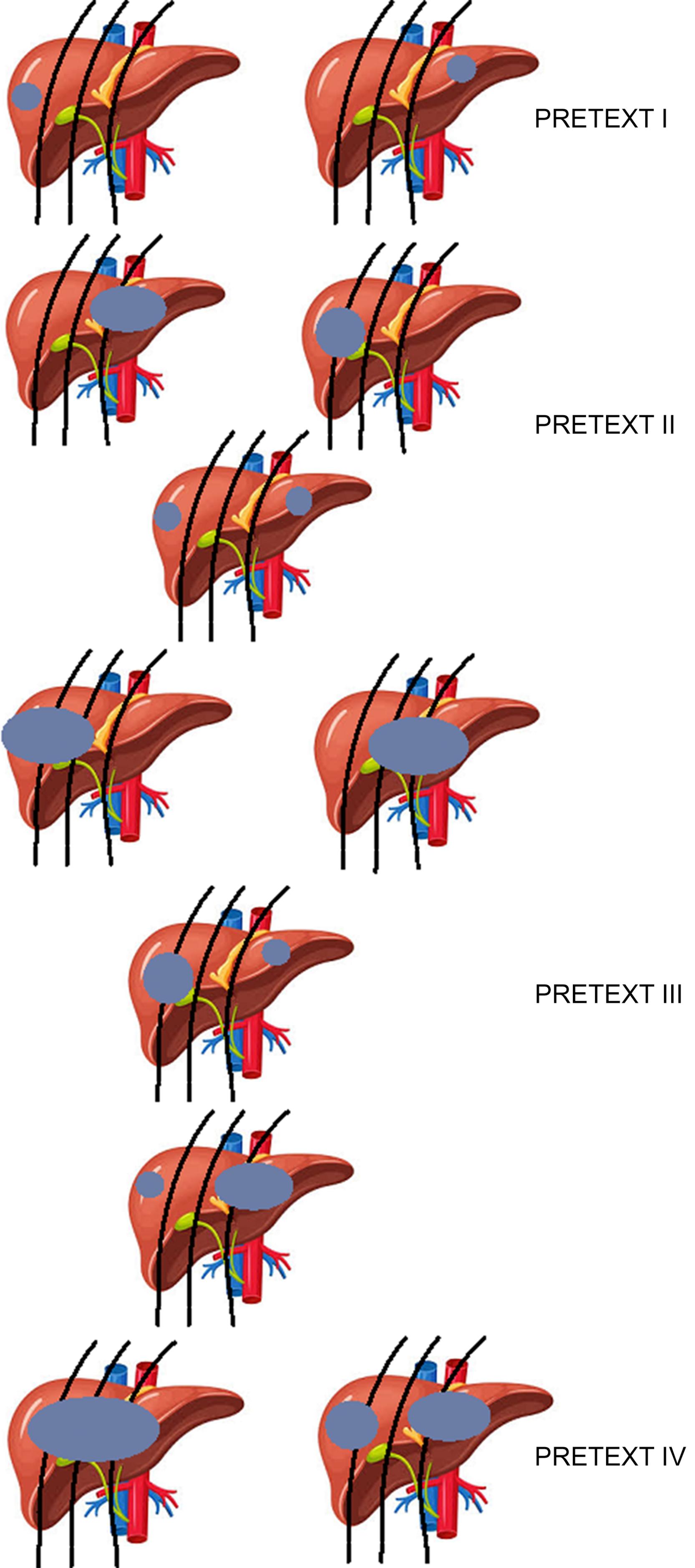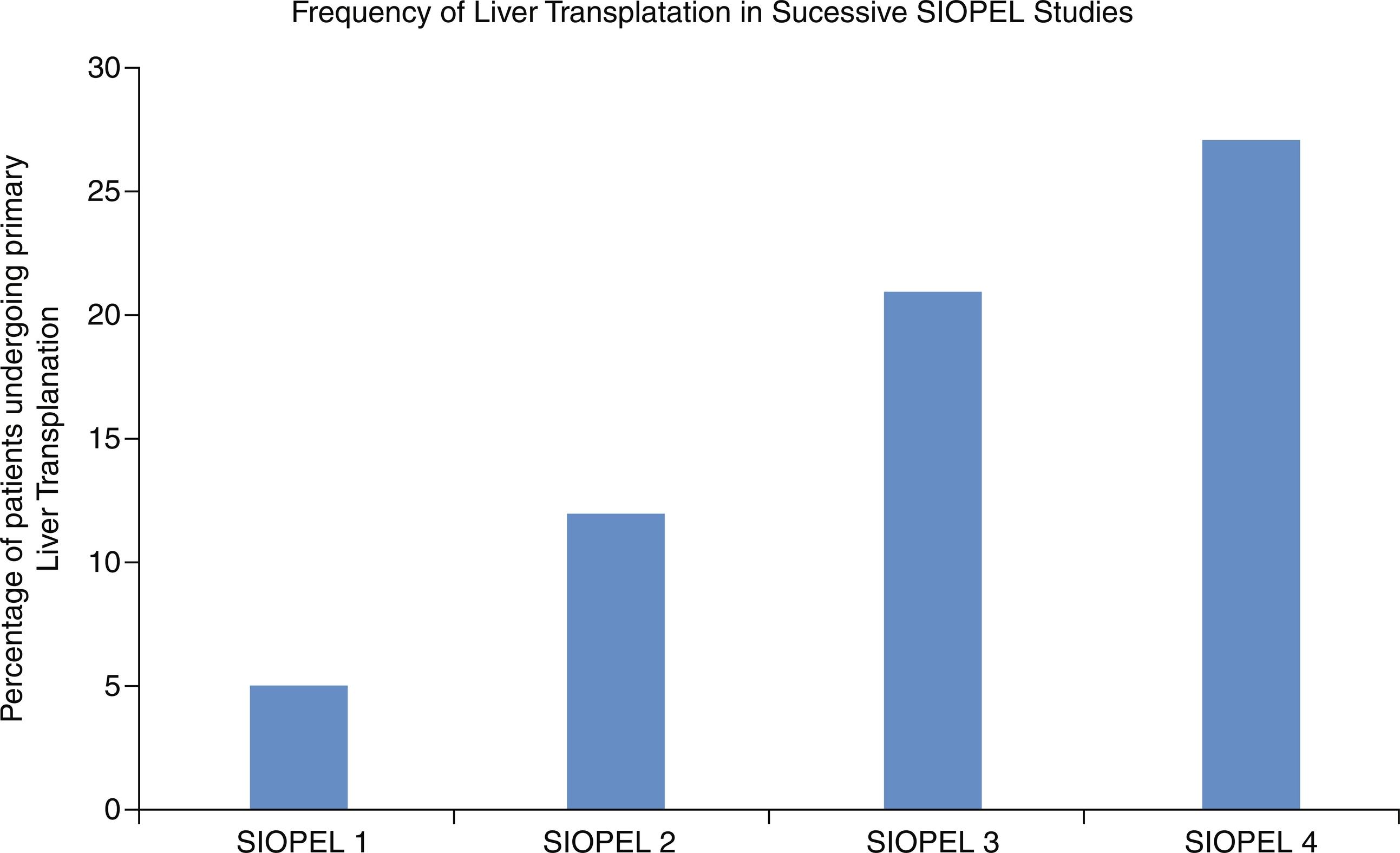Physical Address
304 North Cardinal St.
Dorchester Center, MA 02124
Primary liver tumors in the pediatric population are rare entities. Based on UK children’s cancer registry data (0–16 years old), in the period 2006 to 2008, a total of 55 cases of hepatic tumors (hepatoblastoma and hepatocellular carcinoma) were registered, equating to an annual incidence of approximately 2.0 per million children. The Surveillance, Epidemiology, and End Results (SEER) data from the United States describe the estimated incidence of primary hepatic tumors in children to about 1.6 per million children. Overall, primary hepatic tumors in children account for only 1% of all pediatric malignancies.
Historically, primary hepatic tumors have been regarded as epithelial or mesenchymal in origin, encompassing both malignant and benign tumors ( Table 38.1 ). Refinements to this basic classification of hepatic tumors, specifically with primary malignant epithelial tumors of the liver, have allowed the development of risk stratification and prognostic indicators, along with improvements in treatment strategies.
| Type of Tumor | Malignant | Benign |
|---|---|---|
| Epithelial tumors | Hepatoblastoma | Adenoma |
| Hepatocellular carcinoma | Focal nodular hyperplasia | |
| Mesenchymal tumors | Rhabdomyosarcoma | Hamartoma |
| Undifferentiated sarcoma of the liver | Hemangioma | |
| Angiosarcoma | Hemangioendothelioma |
In the pediatric setting, the combination of chemotherapy and/or surgery, including transplantation, remains the fundamental tenet of the radical approach to the treatment of primary liver tumors. Strategies using interventional radiology approaches, such as transarterial chemoembolization and radiofrequency ablation, are well established in the management of liver tumors (primary and secondary tumors) in the adult oncology field. The true benefit of such approaches in the pediatric oncology domain is yet to be determined.
Hepatoblastoma accounts for approximately 80% of all primary liver tumors in children, with the peak incidence within the first 4 years of life and a median age of presentation of 18 months. The data describe an almost doubling of the incidence of hepatoblastoma over the periods 1973 to 1977 to 1993 to 1997 (0.61–1.18/million, respectively), with a subsequent annual percentage increase in incidence of hepatoblastoma of 4%. The cause of hepatoblastoma, like most pediatric malignancies, is unknown, and most tumors will arise de novo ; however, there are a number of preexisiting underlying medical conditions/syndromes associated with an increased risk of developing hepatoblastoma ( Table 38.2 ).
| Condition With Predisposition to Developing Hepatoblastoma | Reference |
|---|---|
| Beckwith-Weidemann syndrome | |
| Familial adenomatous polyposis | |
| Trisomy 18 (Edward syndrome) | |
| Li-Fraumeni syndrome |
A number of studies across industrialized nations (United Kingdom, United States, China, Japan, Scandinavian countries) have confirmed that there is a clear increased risk of hepatoblastoma with very low birth weight (VLBW), most commonly defined as a birth weight of less than 1500 g.
The exact cause of this increased risk of hepatoblastoma with VLBW remains unclear; however, the possible effects of other perinatal and environmental factors, such as preeclampsia, high maternal pregnancy weight, hydramnios (oligo- and poly-), assisted conception, parental tobacco use, parental occupational exposure to petroleum, metals, and paint on the risk of developing hepatoblastoma have been postulated.
Survival from hepatoblastoma has seen dramatic improvements over the past four decades, from around 35% in the 1970s to current survival figures from 50% to 100%, depending on the disease characteristics. Performing a complete resection is absolutely critical to achieving a cure in hepatoblastoma, but approximately 60% of tumors are deemed unresectable at presentation.
For the staging of hepatoblastoma, the system originally developed by the International Society of Paediatric Oncology Epithelial Liver tumor study group (SIOPEL) and validated in their first international trial, SIOPEL 1 as prognostically valuable, PRETEXT (pretreatment extent of disease) has been universally adopted as the standard radiological approach to describing the extent of the tumor at diagnosis ( Fig. 38.1 ). This includes the addition of a number of annotation factors that describe venous-portal involvement of the tumor (V, P), involvement of contiguous extrahepatic organs, and the presence of distant metastases (E, M). Revisions to these annotation factors recognize the worse prognosis associated with multifocal tumors (F) or tumor rupture (R), along with involvement of the caudate lobe (C) and local lymph nodes (N); this is now reflected in the annotation factors used following recommendations by the Childrens Hepatic tumors International Collaboration (CHIC).

Hepatoblastoma is frequently associated with elevated serum levels of alpha-fetoprotein (AFP) and currently represents the only tumor marker that can be used to monitor response to treatment and possible recurrence in the disease surveillance follow-up phase. Both the Children’s Oncology Group (COG) and ICLTS group have affirmed that a low AFP level (< 100 ng/mL) at diagnosis is associated with a poorer prognosis; this has often been related to particular histological subtypes, in particular the small cell undifferentiated subtype. Taking into consideration the relative AFP levels in early infancy and the prognostic implications of low AFP levels, the CHIC analysis has led to the recommendation of three ranges of AFP to be taken into account when considering risk stratification (< 100, 101–1000, and > 1000 ng/mL). The only other additional factor that has been included in this new risk stratification is age.
Complete surgical resection is fundamental in achieving a cure in hepatoblastoma. The current view is that in all but a few very select cases, neoadjuvant chemotherapy is applied to improve the options for complete resection. Assessment of resectability takes the PRETEXT system and applies this in the context of having received neoadjuvant chemotherapy, referred to as POSTTEXT (post-treatment extent of disease). Surgery for hepatoblastoma should be driven by a specialized hepatobiliary surgical team that includes expertise for performing liver transplantation; it should be undertaken using the Brisbane 2000 nomenclature system to describe the planned resection. Nonanatomical resections are associated with an increased risk of post-operative residual tumor and inferior prognosis and, as such, are not recommended surgical strategies.
Treatment of refractory or relapsed disease remains a significant challenge. For patients who are anthracycline-naïve at the time of relapse or progression, the addition of an anthracycline and further surgery may provide salvage options for about one-third of patients. A number of alternative chemotherapeutic agents have been investigated, including etoposide, ifosfamide, oxaliplatin, and irinotecan. Irinotecan has been shown to have some activity in hepatoblastoma and is being further investigated in the current international Pediatric Hepatic Malignancy International Therapeutic Trial (PHITT) in the context of high-risk hepatoblastoma and persisting metastatic disease.
Liver transplantation has become an increasingly used option for patients with extensive disease (with or without metastases) as our technical ability to undertake these procedures and improvements in post-transplantation care have evolved ( Fig. 38.2 ). The superior outcomes for individuals undergoing liver transplantation as the primary surgical intervention, as compared with liver transplantation in the setting of relapsed or recurrent disease following previous local resection, the so-called rescue transplantation (82% vs. 30% survival at 5 years), might suggest that we should be more liberal in selecting patients for primary liver transplantation as the primary surgical option for hepatoblastoma. The presence of distant metastases (usually lung) at diagnosis is not an absolute contraindication for consideration of liver transplantation provided that clearance of metastases can be achieved with neoadjuvant chemotherapy and/or with surgical resection. Currently, liver transplantation should be considered as the primary surgical solution for patients with multifocal (F +) POSTTEXT IV tumors. Multifocal PRETEXT IV without distant metastasis should be an indication for liver transplantation. In the current PHITT trial, it is recommended to make a referral for transplantation after limited chemotherapy. When considering large, solitary, POSTTEXT IV tumors, preservation of adequate normal liver parenchyma needs to be considered in defining the most appropriate surgical approach. POSTTEXT III tumors that demonstrate vascular or portal involvement (V +, P +) should be considered for liver transplantation, although this latter group of patients may be regarded by some as suitable for extreme conventional resection. Progressive or persistent extrahepatic disease and/or lung metastases that cannot be cleared with neoadjuvant chemotherapy and/or surgery is a contraindication for liver transplantation.

Notwithstanding the clear role of transplantation in the management of hepatoblastoma, there remain a number of unanswered questions, such as those considered in the following sections.
Prolonged chemotherapy administration, which attempts to render tumors resectable by conventional resection, should be avoided. Several studies indicate that continuing to administer chemotherapy after four cycles does not increase the likelihood of conventional resectability of the tumour. In addition, the prolonged administration can lead to drug resistance. The disappearance of nodule(s) from one sector of liver following chemotherapy should not change the decision for transplantation if all sectors were involved (multifocal tumor-PRETEXT IV) prechemotherapy because there is a high risk of persistent microscopic viable tumor cells, despite what appears as radiological clearance. Current practice in established centers is to review resectability after two courses and plan liver transplantation after four cycles of chemotherapy.
There is agreement regarding exclusion of extrahepatic disease in children considered for transplant. Although chemotherapy is very successful in the eradication of lung metastases in hepatoblastoma patients, a 90% response rate was observed in the recent SIOPEL 4 study. If a child is to be considered for transplantation, pulmonary metastases that persist following chemotherapy should be excised (not too small to find at surgery) before liver transplantation to provide unequivocal evidence that there is no viable tumor. Similarly, if there is any extrahepatic disease, it has to be completely excised before considering for transplantation.
Another challenge faced by physicians dealing with transplantation for hepatoblastoma is the combined toxicity of immunosuppressive drugs for antirejection and chemotherapy resulting in increased risk of complications, especially sepsis. Sepsis can be a major factor responsible for increased mortality post-liver transplantation in patients with hepatoblastoma. Therefore, early minimization of antirejection medications is a reasonable strategy. A cautious approach is still necessary because under conditions of identical immunosuppression, the incidence of rejection was similar when children who underwent liver transplantation for hepatoblastoma were compared with children who underwent transplantation for nonmalignant indications.
Become a Clinical Tree membership for Full access and enjoy Unlimited articles
If you are a member. Log in here